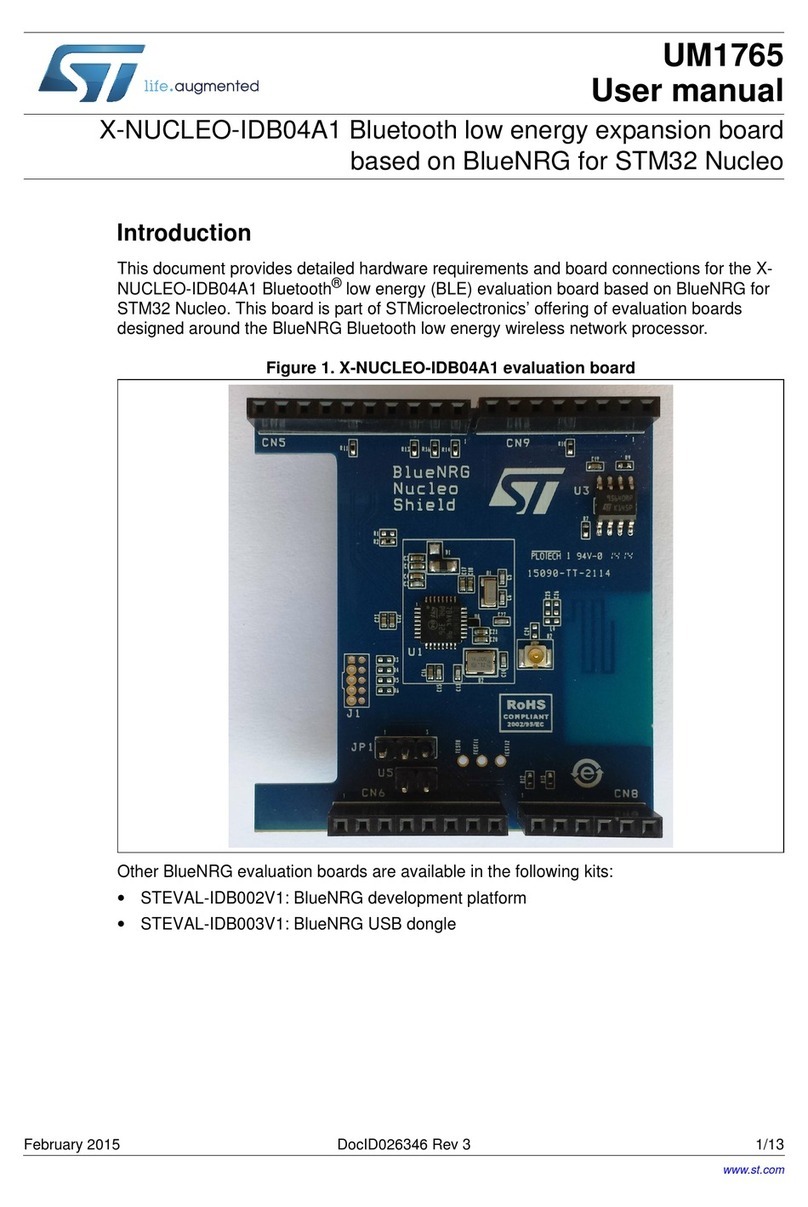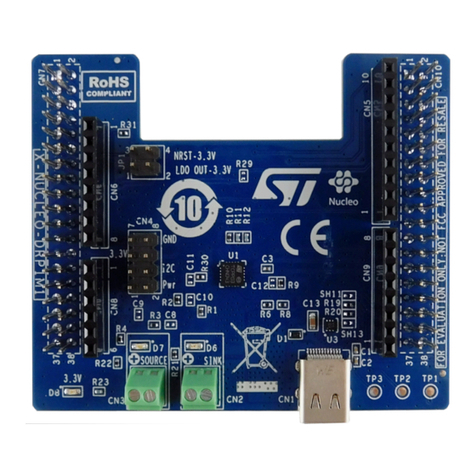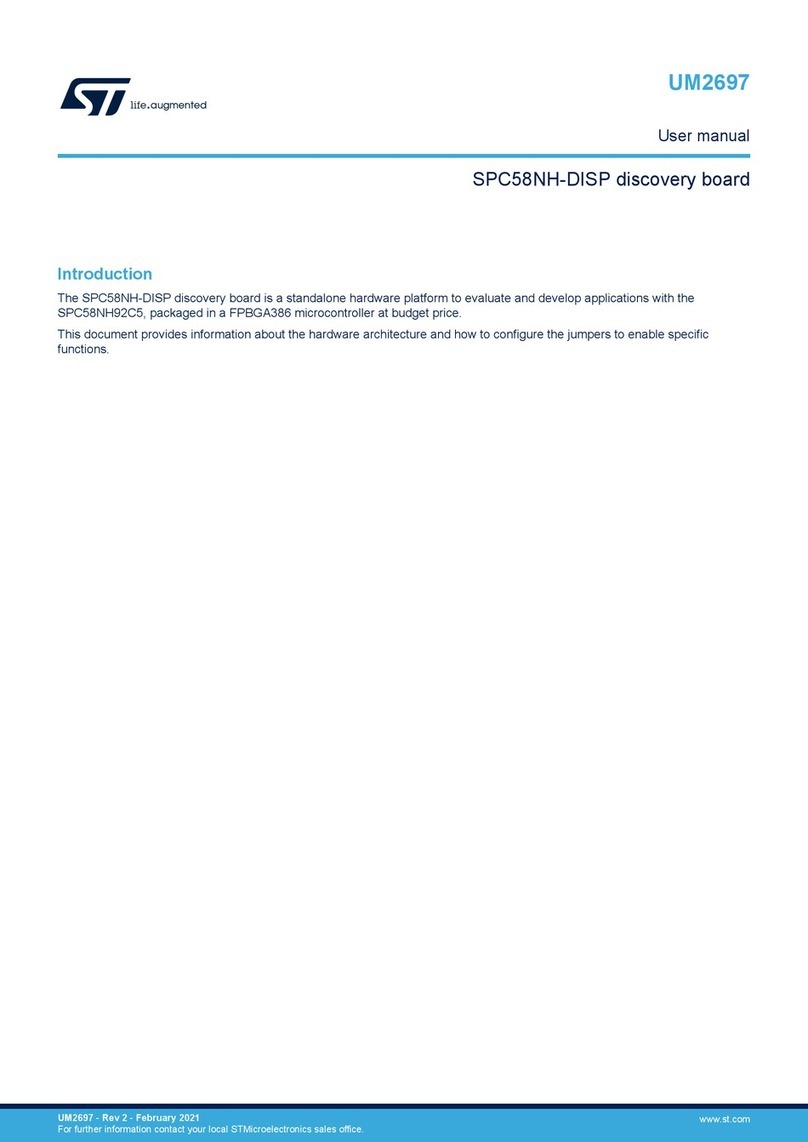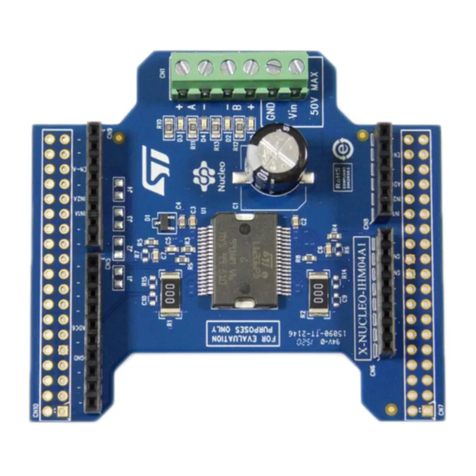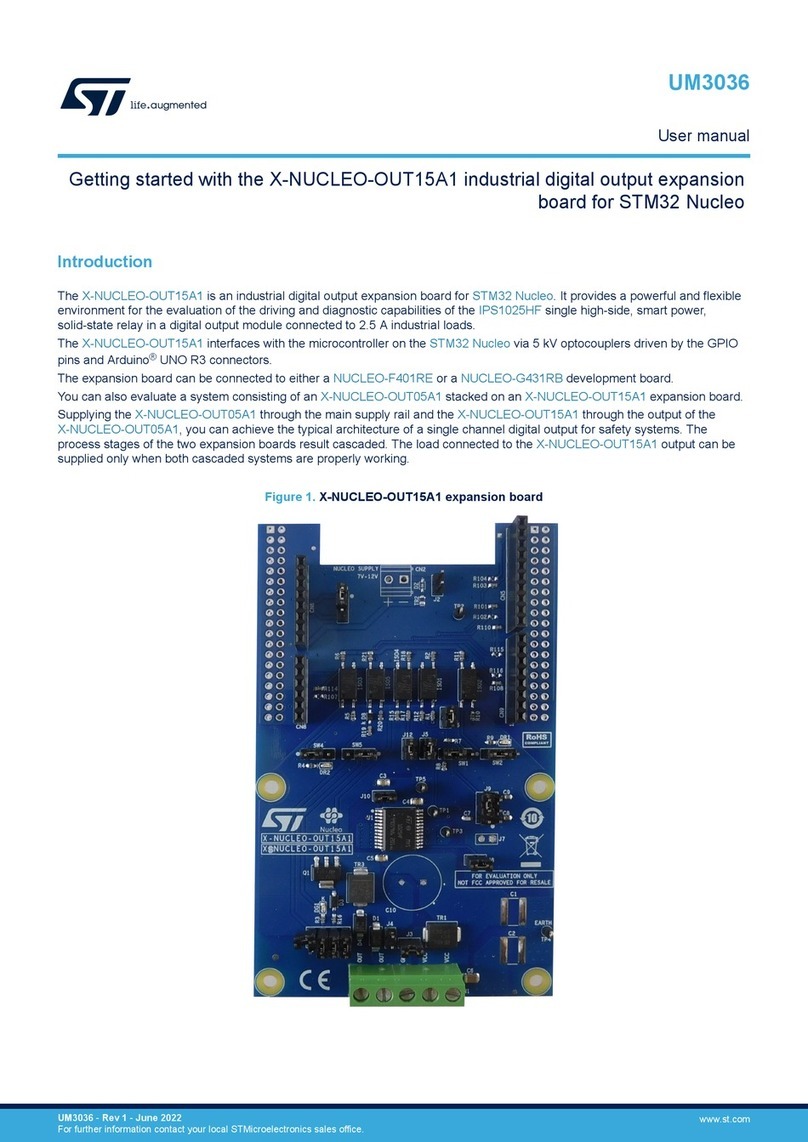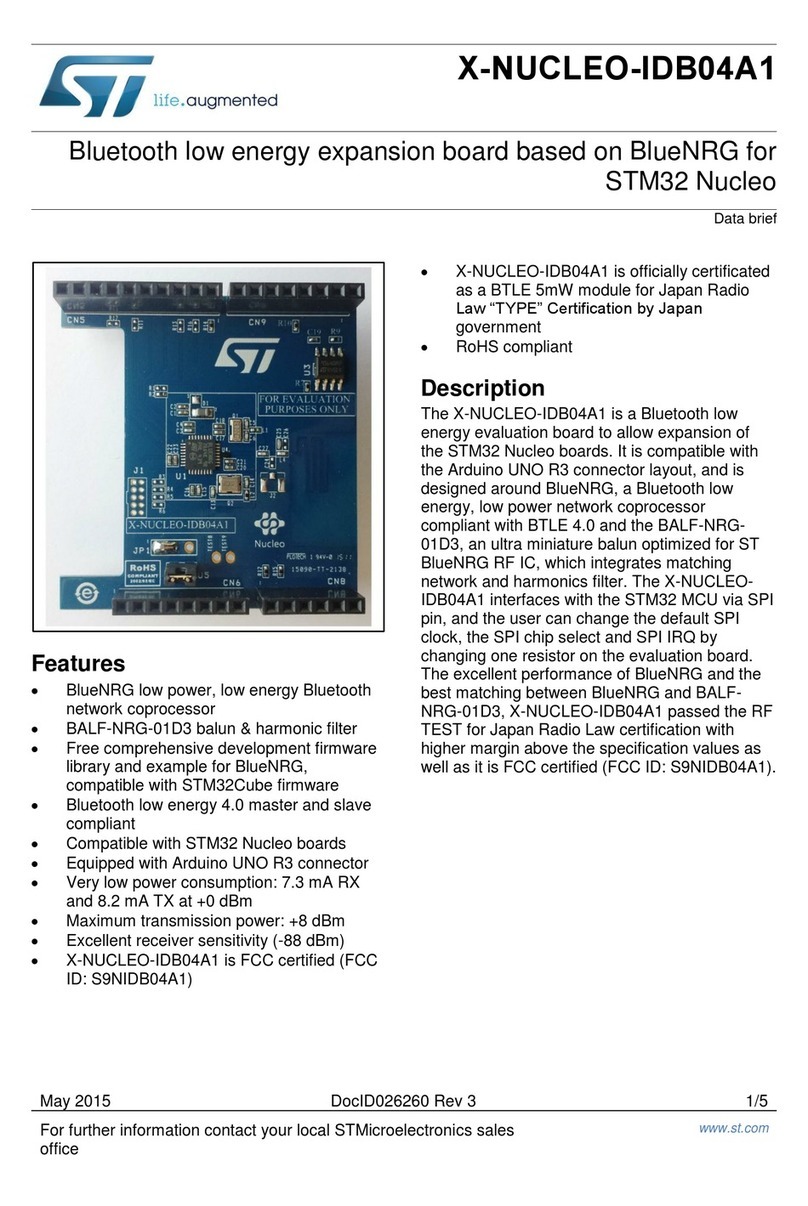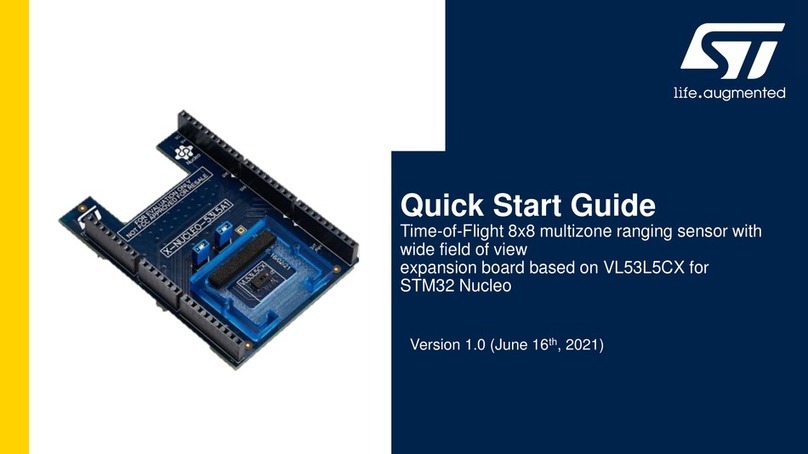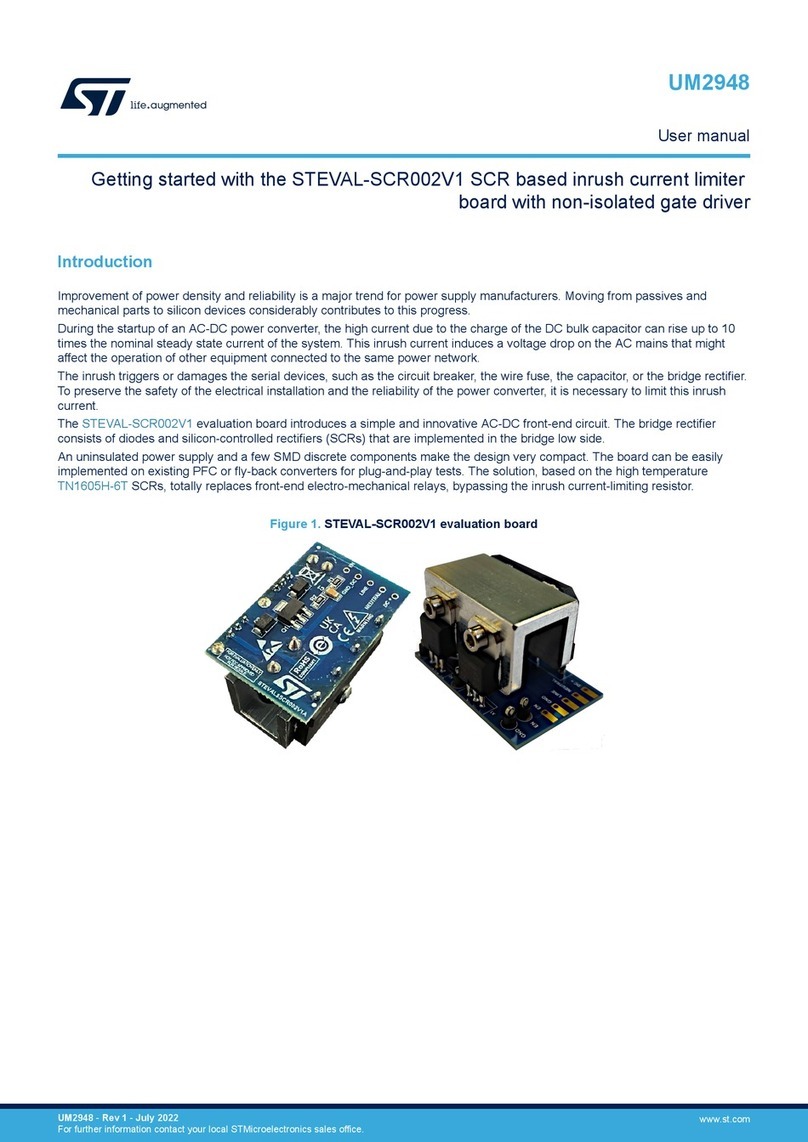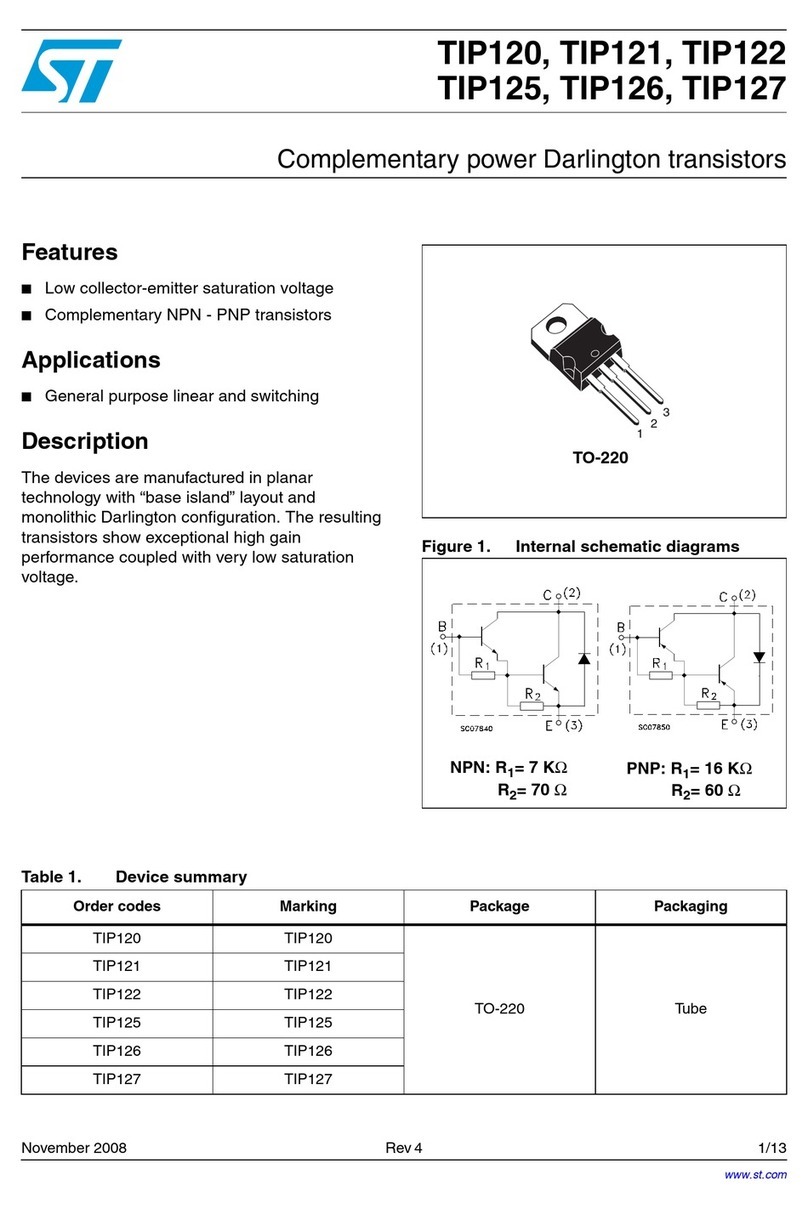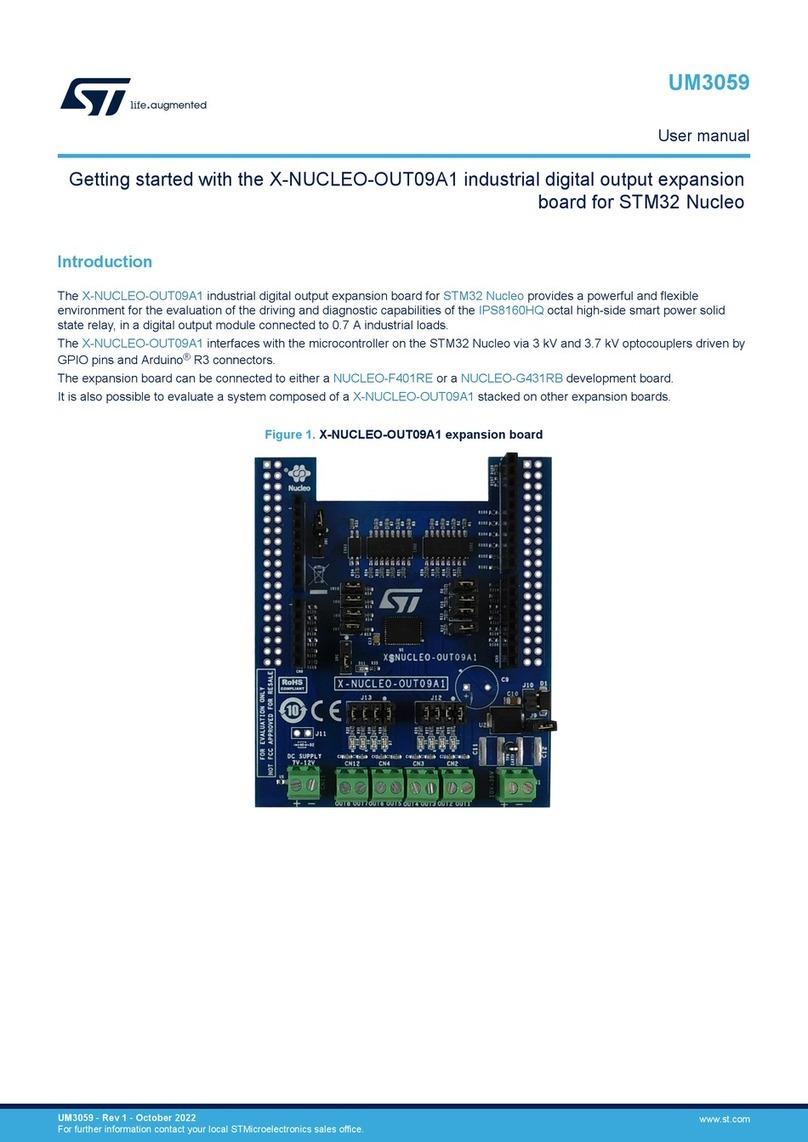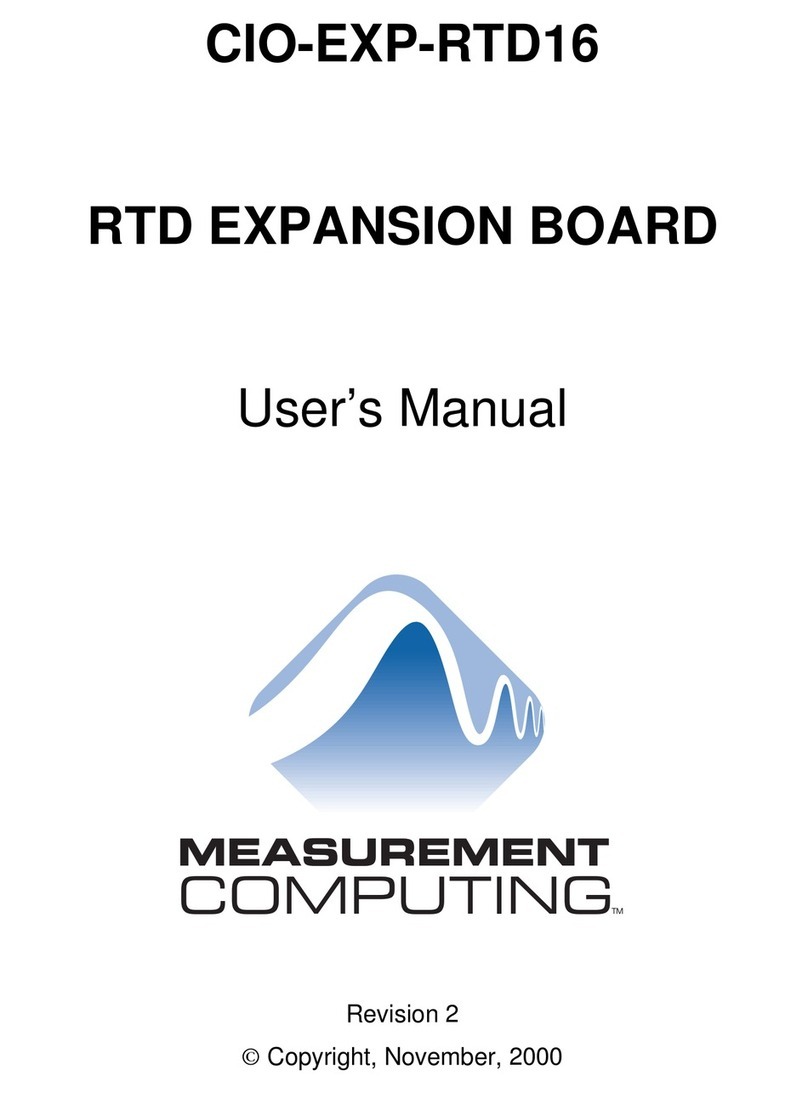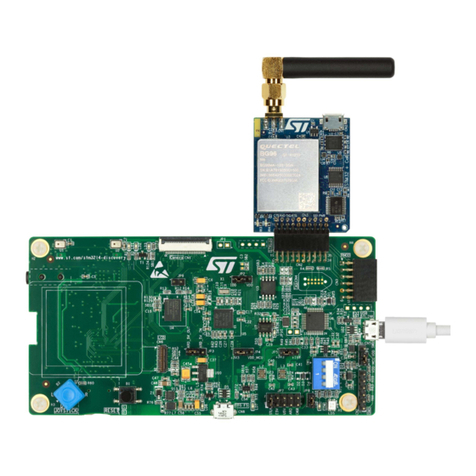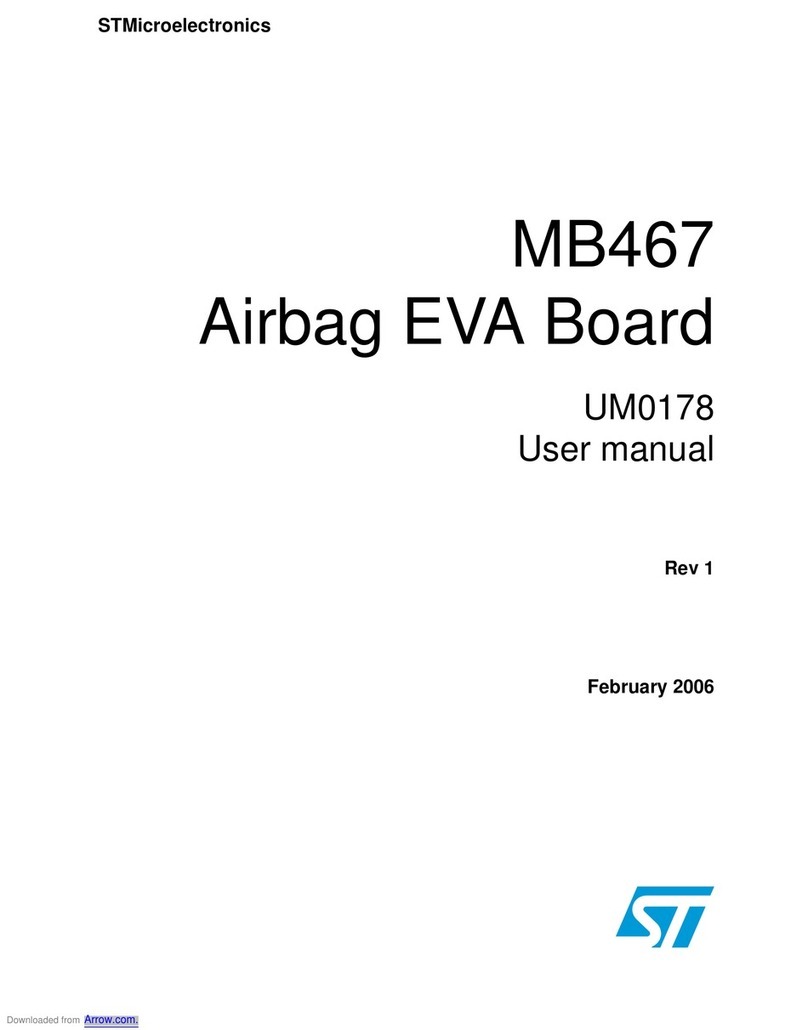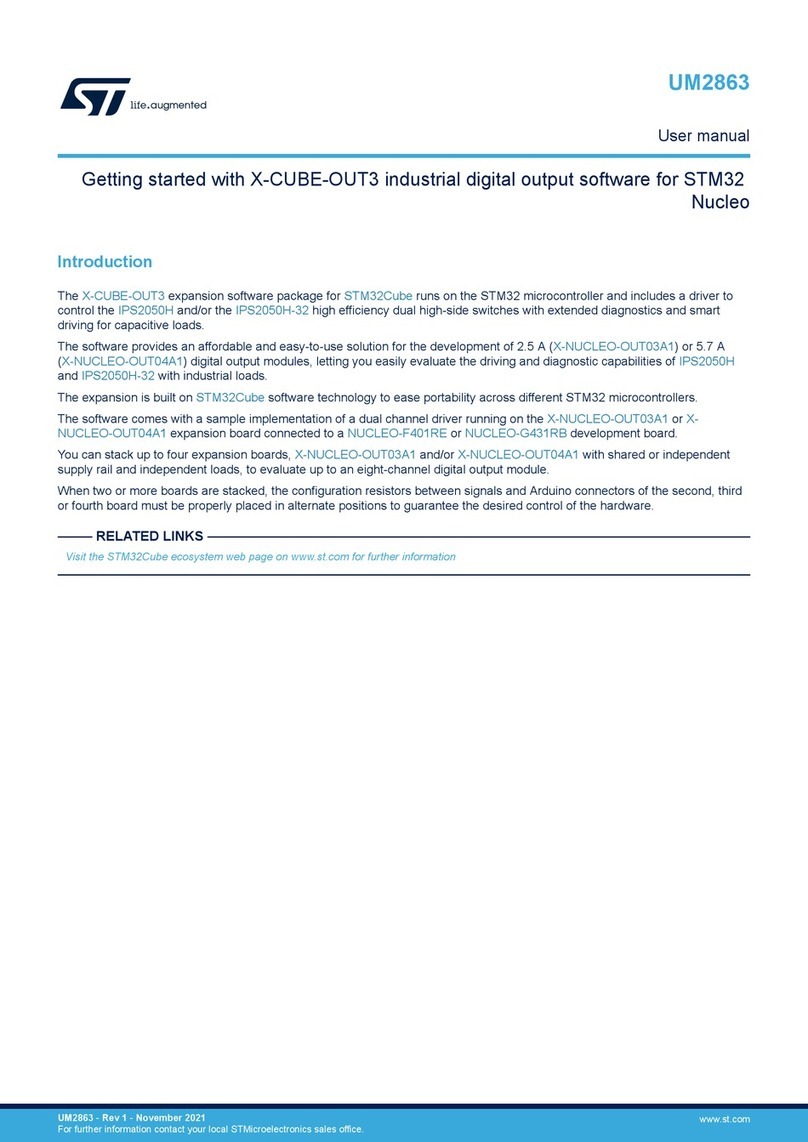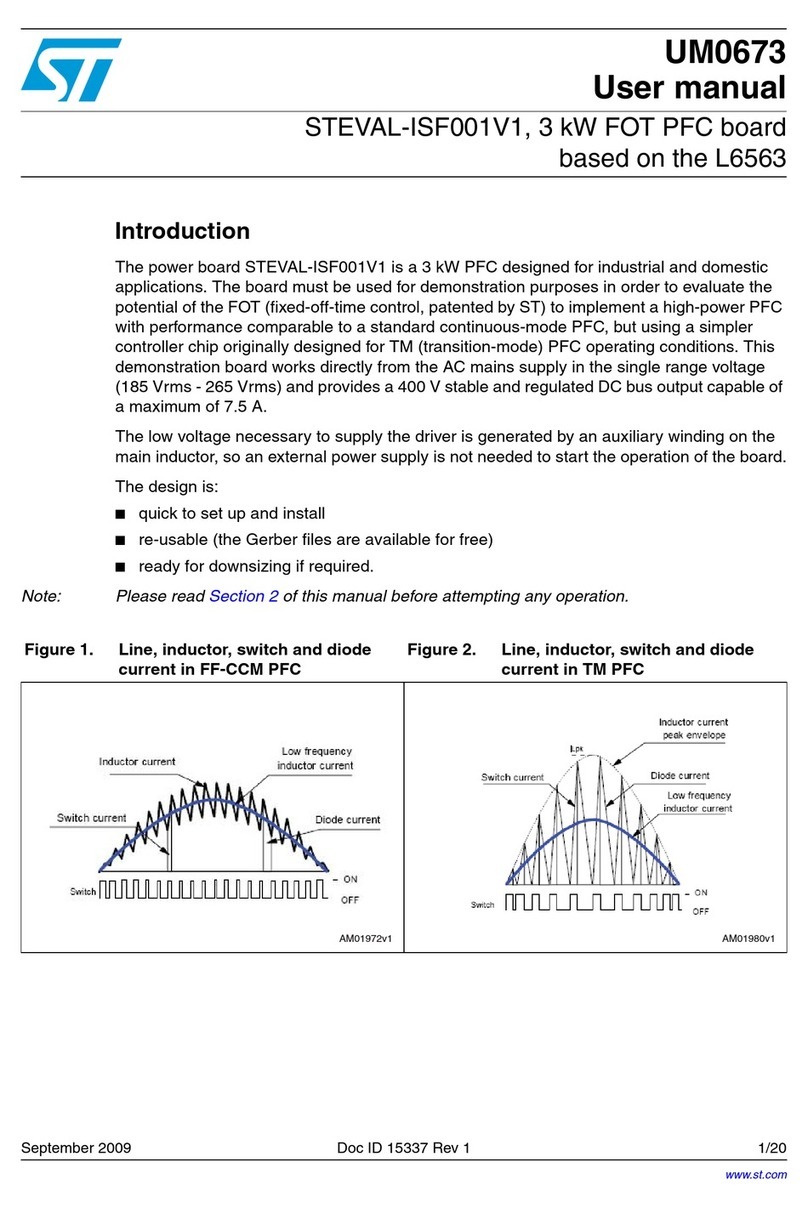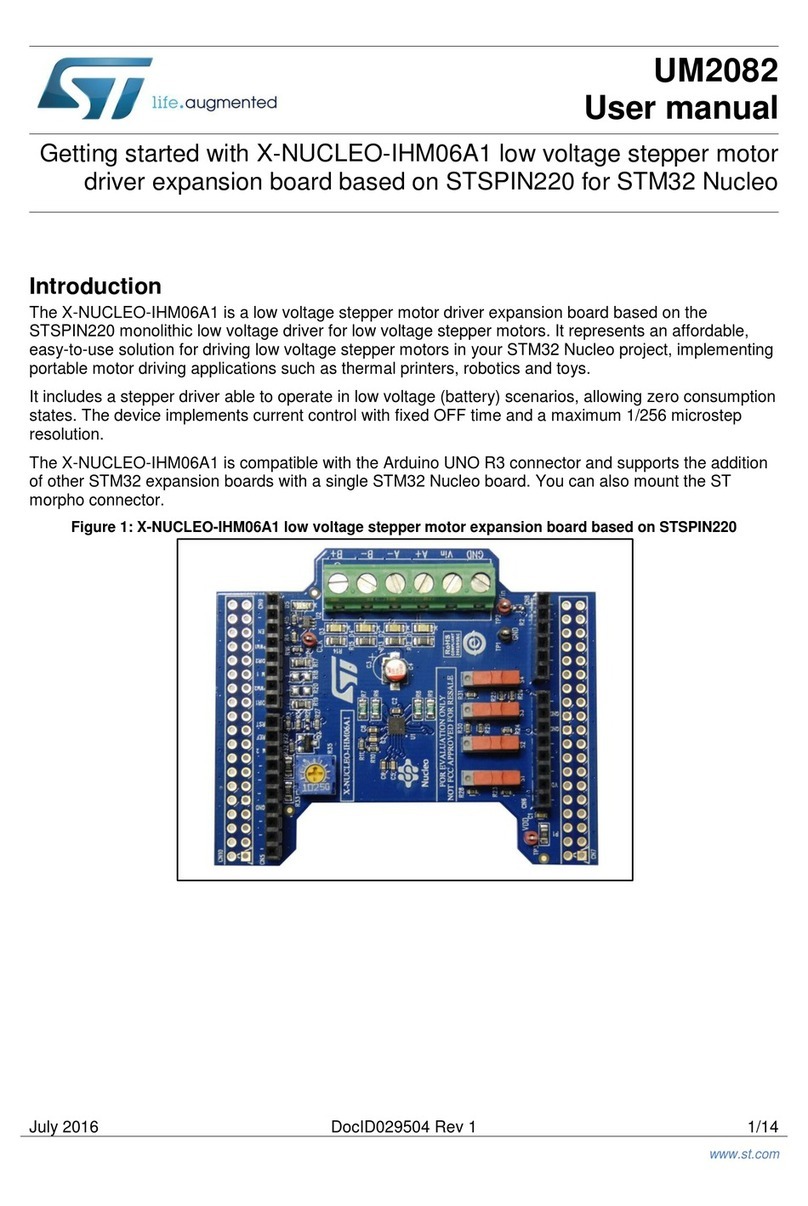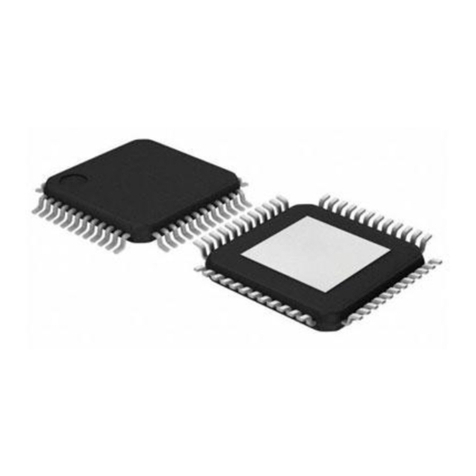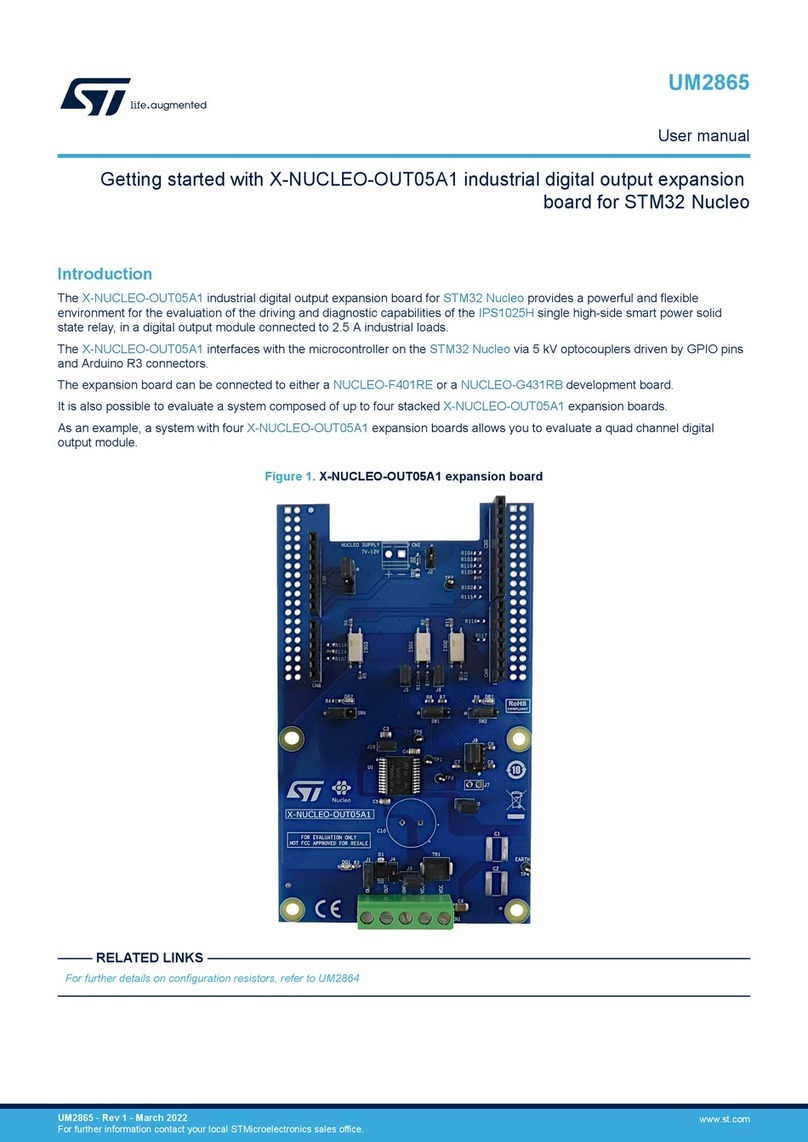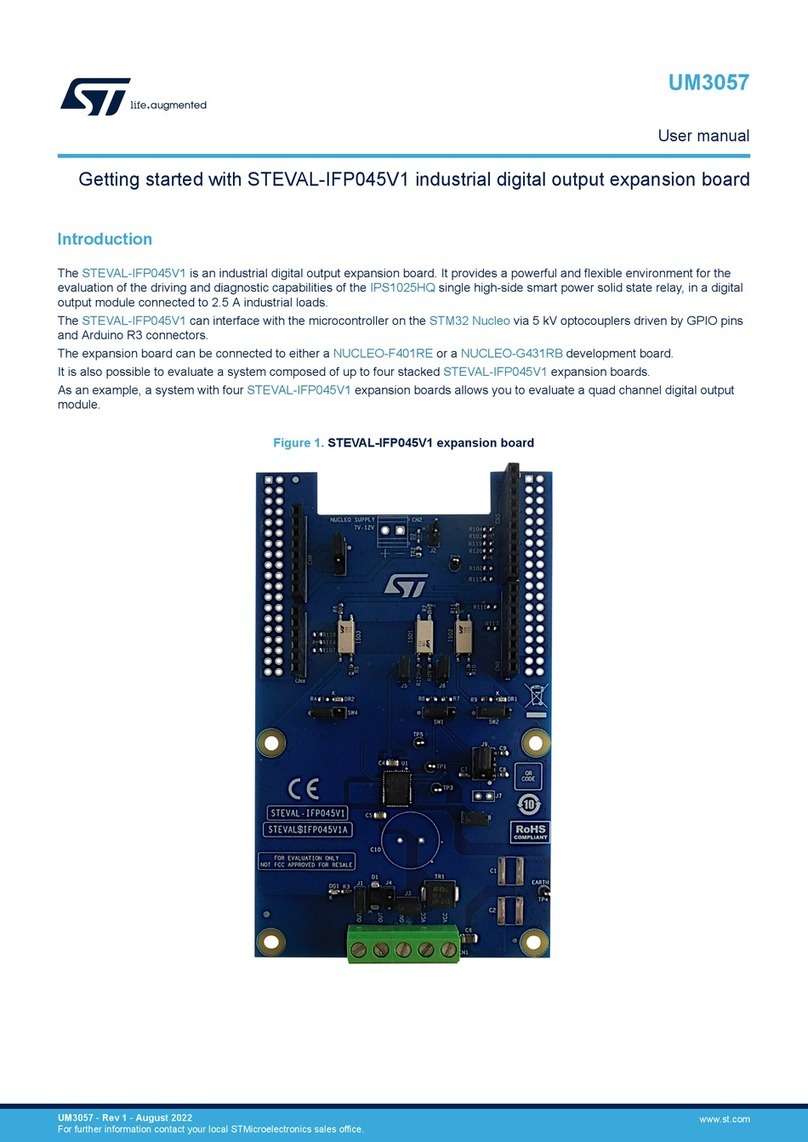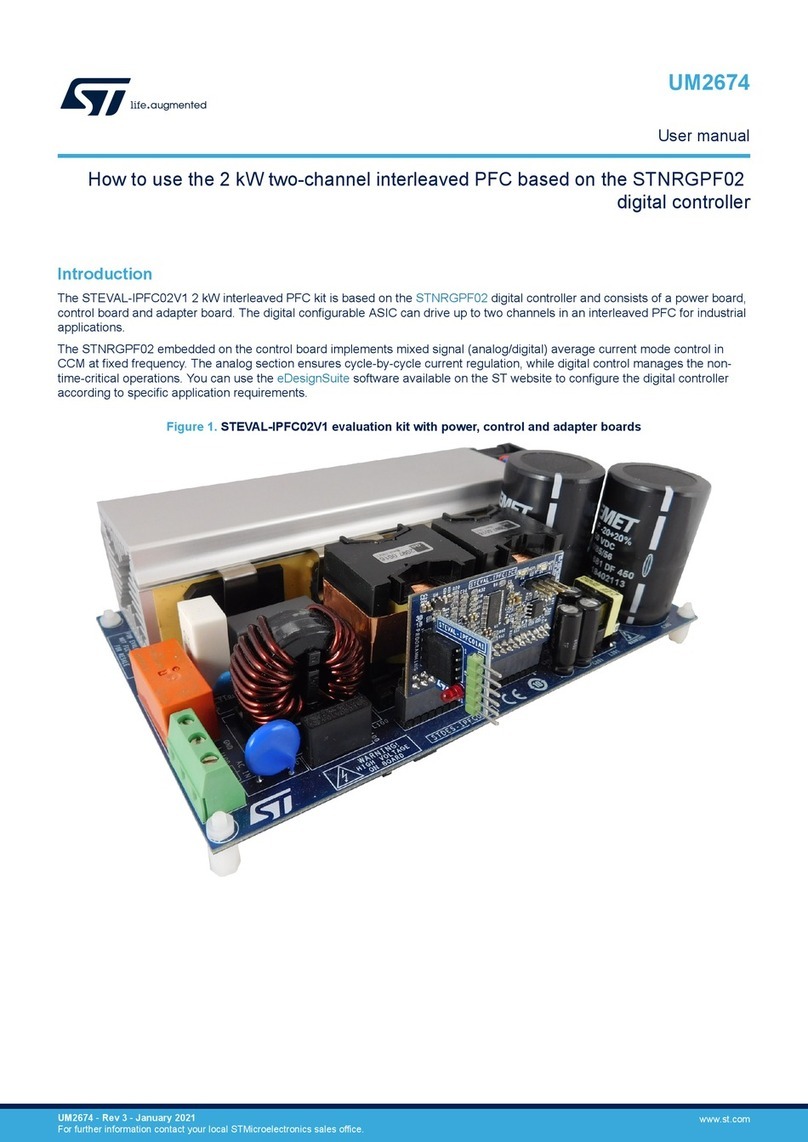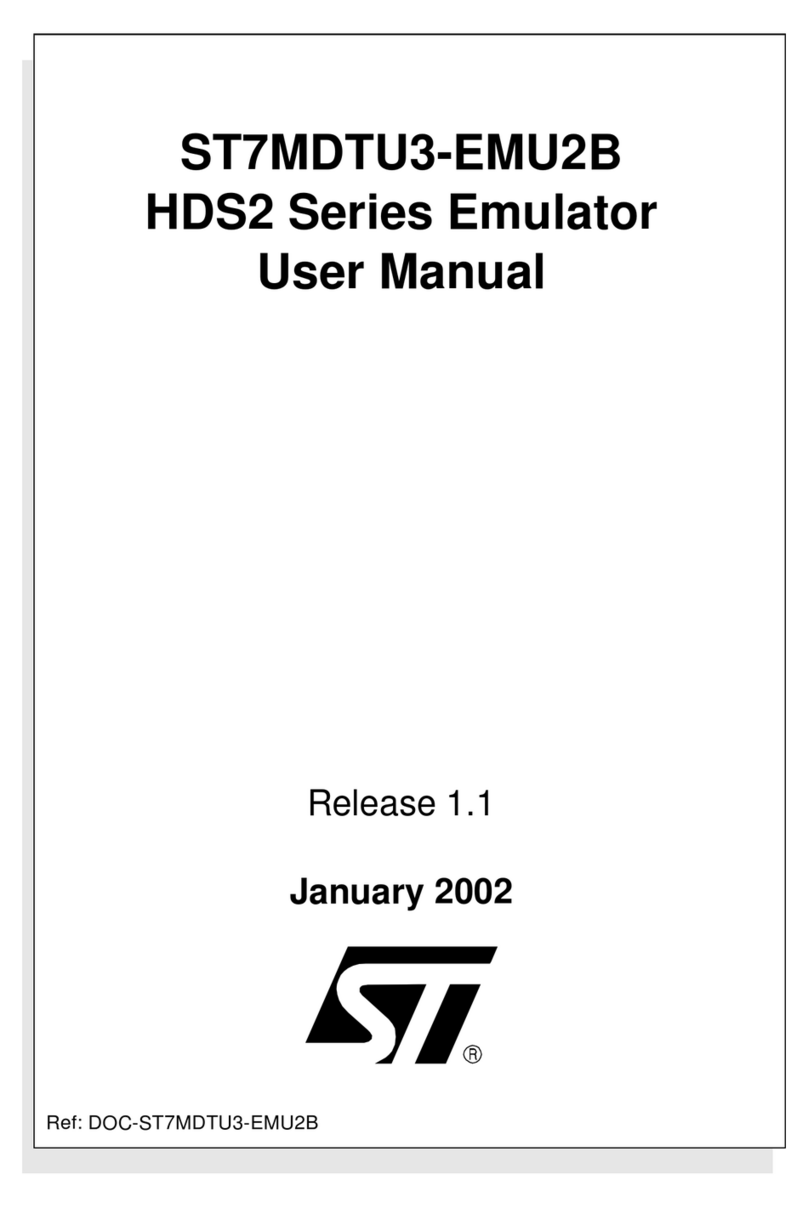
5 Quick start
The B-WL5M-SUBG1 STM32WL connectivity expansion board product is an easy‑to‑use and low‑cost
development kit used to evaluate and start development quickly with an STM32WL5MOC module. Before
installing and using the product, accept the evaluation product license agreement from the www.st.com/epla web
page. For more information on the B-WL5M-SUBG1 STM32WL connectivity expansion board product and
demonstration software, visit the www.st.com/stm32nucleo web page.
5.1 Getting started
Follow the sequence below to configure the product and launch the demonstration application (refer to Figure 3
for component location):
1. Check jumper positions on board, JP2 (IDD) ON, JP1 (internal) OFF. The default jumper position on the board
is explained in Table 4.
2. Supply the B-WL5M-SUBG1 STM32WL connectivity expansion board (MB1779). You can, for example,
connect a supply cable at CN4 to supply the board with 5 V (5EV).
3. Connect the B-WL5M-SUBG1 STM32WL connectivity expansion board (MB1779) to an external STLINK-
V3SET debugger through the CN3 connector of the MB1779 board. Connect the external STLINK-V3SET
debugger to a PC with a standard USB cable. Then the LED4 (5V_PWR) green LED lights up, and the LED3
red LED flashes quickly.
4. On the PC, connect a UART terminal to the board using the following settings:
– UART terminal: new line received = auto; new line transmit = LF (line feed)
– Serial port setting: Select COM port number, 9600 baud rate, 8-bit data, parity none, one stop bit, and no
flow control
5. Press on the SW2 reset button of the B-WL5M-SUBG1 STM32WL connectivity expansion board (MB1779).
– The MB1779 board remains silent until it gets a command from the connected PC to start sending a
beacon on one of the beacon frequencies.
– The frequency is selected depending on the region.
– After the version check, the first three commands to send to the PC must set region, subregion, and
start the beacon (AT+REGION=x and AT_BEACON_ON). The first two commands select the format of
the transmission beacon. The third command starts sending the beacon.
– For a list of available regions run AT_LIST_REGIONS.
6. Then a concentrator (for example a NUCLEO-WL55JC1 board) starts flashing a green LED on each time slot
of the network.
7. To get the demonstration fully up and running, up to 14 B-WL5M-SUBG1 STM32WL connectivity expansion
board (MB1779) demonstration sensors can be flashed and placed against a Nucleo demonstration
concentrator.
8. This demonstration application software is available on the www.st.com website.
Table 4. Jumper default configuration
Jumper Definition Position(1) Comment
JP2 IDD ON For STM32WL5MOC current
measurements (RF part)
1. The default jumper state is shown in bold.
UM3127
Quick start
UM3127 - Rev 1 page 6/47
